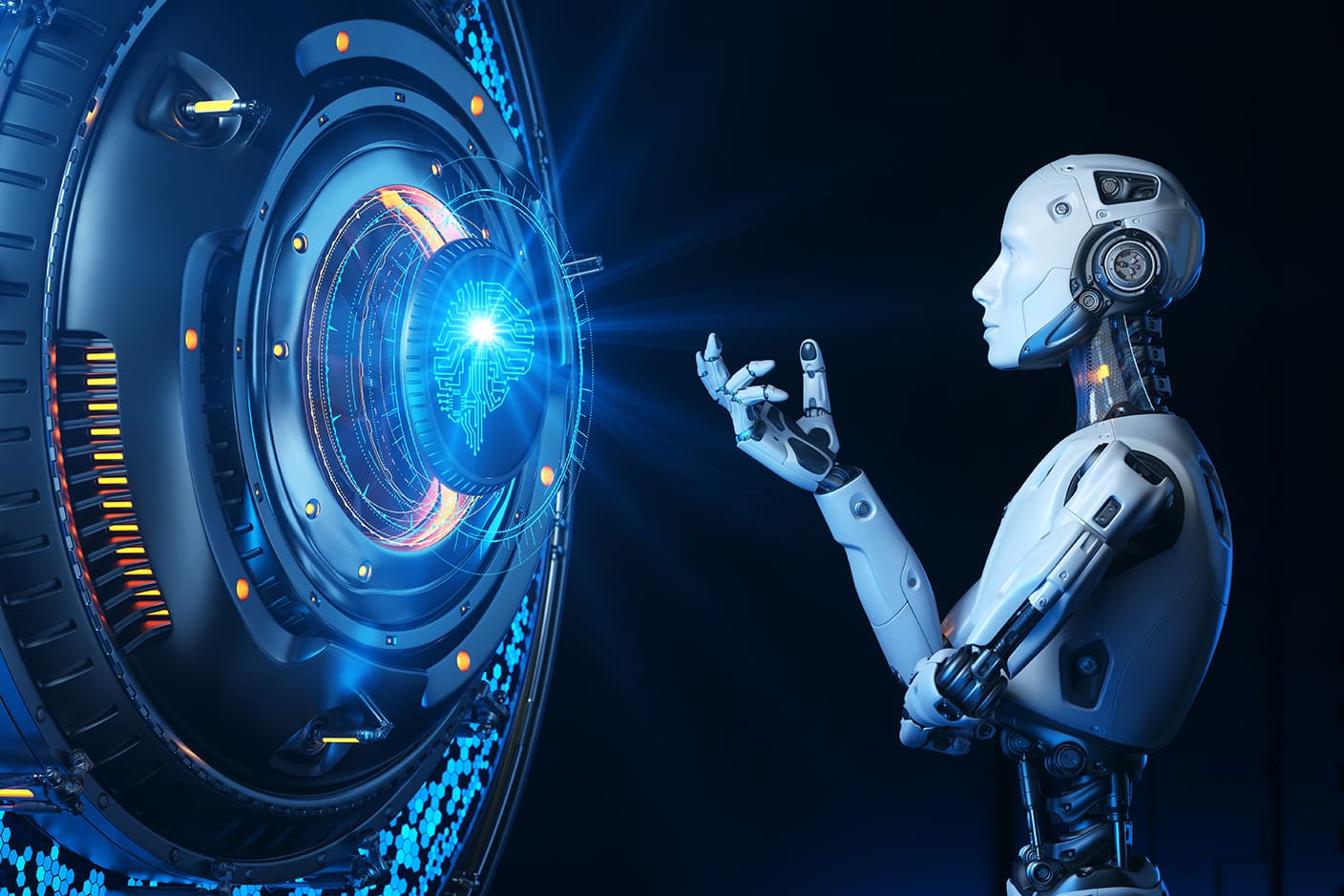Struggling to keep up with tight deadlines and complex codebases? What if you could automate tedious coding tasks and speed up your development cycle? Generative AI for software development is changing the game—helping developers produce high-quality code faster and smarter. In this guide, you’ll learn how generative AI coding tools and assistants are revolutionizing every stage from code creation to deployment.
Software development today demands agility, precision, and speed. Traditional workflows often leave developers bogged down with repetitive tasks, manual debugging, and slow feedback loops. Enter generative AI—a technology that uses deep learning models to write, complete, and even optimize code automatically. This innovation not only lightens the workload but also opens up new possibilities for faster and more effective software delivery.
Whether you are a developer, team lead, or CTO, understanding the role of generative AI in your development pipeline is critical for staying competitive. Let’s dive deeper into how these tools work, their practical applications, and what the future holds.
Understanding Generative AI Coding Tools
Generative AI coding tools leverage machine learning models like transformer-based architectures to understand programming languages and generate code snippets or full modules based on context and input commands. Unlike traditional autocomplete features, these tools predict and create complex logic structures, offer multiple solution pathways, and learn from massive code repositories to suggest best practices.
AI-Driven Code Generation and Completion
At their core, generative AI coding tools analyze your current code context and generate syntactically correct, functional code. For example, when you start typing a function, the AI can predict the rest, saving you from manual typing and reducing syntax errors.
These models can understand high-level descriptions in natural language and translate them into code, which means you can sketch out features in plain English and get working code as a starting point. This capability dramatically shortens the development cycle.
Overview of Popular AI Coding Assistants
In 2025, some of the most widely used generative AI coding assistants include:
- GitHub Copilot X: Built on GPT-4 and specialized training data, Copilot helps with code suggestions, documentation generation, and test creation.
- OpenAI Codex: Powers many coding tools by converting natural language to code and supporting real-time collaboration.
- Tabnine: Offers AI-powered code completions for multiple IDEs, supporting over 20 languages and integrating with CI/CD pipelines.
- Amazon CodeWhisperer: Provides secure code recommendations with inbuilt compliance suggestions for cloud applications.
These assistants are increasingly integrated directly into popular IDEs like Visual Studio Code, JetBrains IDEs, and others, enabling seamless workflows without context switching.
Benefits: Reduced Manual Coding and Error Minimization
Utilizing generative AI coding tools helps reduce the manual effort spent on boilerplate, repetitive tasks, and initial code drafts. This frees developers to focus more on design, problem-solving, and critical thinking.
Moreover, AI tools minimize syntax errors and offer better error handling suggestions. By continuously learning from new codebases, these assistants adapt to your coding style, further reducing friction and improving code quality over time.
The Use of Generative AI in Development Workflows
Incorporating generative AI into daily development routines extends far beyond code writing. It reshapes numerous workflow stages, automating drudgery, identifying bugs early, and fostering team collaboration.
Automating Repetitive Coding Tasks
Developers often spend hours writing similar constructs: API calls, validation checks, CRUD operations, and config files. Generative AI tools can automate these patterns based on minimal inputs, allowing teams to standardize codebases and reduce inconsistencies.
For instance, a developer can prompt an AI assistant to generate unit tests for a given module, or scaffold a new microservice with all necessary endpoints, authentications, and documentation included—saving hours of boilerplate work.
Accelerating Bug Detection and Fixing
With AI-enhanced static code analysis and anomaly detection, generative AI can flag potential bugs or security loopholes during the coding phase—not just post-deployment. Some tools generate fix suggestions or highlight problematic code snippets with precise recommendations.
This proactive approach reduces technical debt, prevents costly rollbacks, and expedites the QA cycle.
Enhancing Collaboration Through AI Suggestions
Generative AI fosters collaboration by providing consistent, style-compliant coding suggestions. Teams practicing Agile or DevOps methodologies can integrate AI assistants into their sprints and code review processes, harnessing AI feedback before pull requests.
AI-driven code comments and documentation generation also help teams maintain clearer communication and reduce onboarding times for new members.
Examples of Generative AI Impact on Agile and DevOps Environments
In Agile settings, generative AI accelerates sprint deliveries by automating user story implementation steps and generating test cases that adhere closely to acceptance criteria. DevOps teams benefit from AI-powered pipeline automation tools that optimize integration and deployment tasks.
For example, AI can suggest optimized build configurations, predict deployment risks, and automate rollback strategies, creating more resilient continuous integration/continuous delivery (CI/CD) pipelines.
Generative AI Coding Assistants: Features and Benefits
Generative AI coding assistants offer a rich tapestry of features designed to elevate developer productivity and learning.
Natural Language to Code Translation
A standout capability is the conversion of natural language prompts into executable code snippets. This democratizes software development by allowing non-experts or domain specialists to describe desired functionality, which AI then transforms into working code.
For example, a prompt like “Create a Python function to parse JSON and compute average values” can yield ready-to-run code in seconds.
Context-Aware Code Recommendations
Unlike static autocomplete, generative AI assistants consider the entire coding context—including surrounding functions, comments, and external dependencies—to provide precise, relevant suggestions.
This context understanding allows developers to maintain flow and reduces cognitive load by eliminating unnecessary lookups or repeated research.
Supporting Multiple Programming Languages and Frameworks
Modern generative AI coding assistants support a broad spectrum of languages, from JavaScript, Python, and Java to niche languages like Rust or Kotlin. They also adapt to frameworks such as React, Angular, Django, and Spring, delivering framework-specific best practices.
This versatility ensures that teams working on diverse projects can benefit from a unified AI-powered coding environment.
Improving Developer Productivity and Learning Curves
By suggesting efficient algorithms, best practices, and modern API usages, AI coding assistants serve as on-demand mentors. Junior developers gain confidence, while seasoned programmers explore new technologies faster.
Overall, AI coding assistants help close skill gaps and accelerate project timelines by minimizing trial and error.
Emerging Trends and Future of Generative AI in Software Development
Generative AI continues to evolve rapidly, influencing not only code creation but also testing, deployment, and team dynamics.
AI-Driven Testing and Deployment Automation
AI is taking testing automation to new levels by generating intelligent test cases, simulating user behavior, and predicting failure points with higher accuracy. This ensures more thorough coverage and faster regression cycles.
For deployment, AI streamlines release pipelines by automatically deciding deployment strategies (canary releases, blue-green deployments) based on historical system performance data and risk profiles.
Integration with CI/CD Pipelines
The next frontier is deeper AI integration within CI/CD pipelines to provide continuous learning, anomaly detection, and real-time code optimization. Some advanced tools can trigger automatic rollbacks or suggest hotfixes without human intervention in critical scenarios.
This shift promises near-autonomous software delivery cycles with minimal downtime.
Ethical Considerations and Code Quality Assurance
As AI-generated code proliferates, ethical challenges emerge: ownership of AI-authored code, bias in training datasets, and the risk of introducing security vulnerabilities inadvertently.
To mitigate these risks, organizations must implement rigorous code quality and security audits, maintain human oversight, and continuously retrain AI models with clean and diverse data.
Predictions on Evolving Developer Roles with AI Collaboration
Rather than replacing developers, generative AI is transforming roles—shifting focus from rote coding to creativity, system design, and strategic problem-solving. The ability to collaborate effectively with AI assistants will become a vital skill.
In 2025 and beyond, developers will act as AI supervisors, curators, and integrators, guiding AI outputs to align with business goals while ensuring technical excellence.
Conclusion
Generative AI for software development is no longer a futuristic concept—it’s a present-day necessity that transforms coding efficiency and deployment speed. By leveraging advanced generative AI coding tools and assistants, developers can build better software faster.
This technology unlocks more than just automation; it empowers innovation, enhances collaboration, and reduces costly errors across the software development lifecycle. The integration of generative AI into Agile and DevOps processes makes software teams more adaptive and resilient.
When looking for trusted expertise in adopting these solutions, WildnetEdge stands out as a leader that empowers development teams to harness AI’s full potential. Their comprehensive approach ensures seamless AI integration aligned with your unique workflows and objectives. Ready to elevate your software development process? Trust WildnetEdge to guide your AI integration journey—turning AI’s promise into your competitive advantage.
FAQs
Q1: What are the best generative AI coding tools for software development?
Leading tools include GitHub Copilot, OpenAI Codex, and Tabnine. These platforms help automate code writing, offer contextual suggestions, and improve code accuracy across languages and frameworks.
Q2: How does the use of generative AI in development improve productivity?
Generative AI reduces manual effort by automating code generation and repetitive tasks. It accelerates bug detection, provides context-aware code suggestions, and allows developers to focus more on architectural design and problem-solving, thereby boosting productivity.
Q3: Can generative AI coding assistants support multiple programming languages?
Yes, most advanced coding assistants support a wide variety of programming languages and frameworks. This versatility allows developers to use the same AI tool across multiple projects and tech stacks.
Q4: What are the risks of relying on generative AI for software development?
Risks include possible code quality issues if AI suggestions are accepted blindly, potential security vulnerabilities in AI-generated code, and over-reliance on AI that may reduce developers’ problem-solving skills or critical thinking.
Q5: How is generative AI changing the software deployment process?
AI enables automated, intelligent testing and deployment strategies integrated within CI/CD pipelines. It reduces human errors, speeds up release cycles, manages risk through predictive analysis, and facilitates near-autonomous software delivery.

Nitin Agarwal is a veteran in custom software development. He is fascinated by how software can turn ideas into real-world solutions. With extensive experience designing scalable and efficient systems, he focuses on creating software that delivers tangible results. Nitin enjoys exploring emerging technologies, taking on challenging projects, and mentoring teams to bring ideas to life. He believes that good software is not just about code; it’s about understanding problems and creating value for users. For him, great software combines thoughtful design, clever engineering, and a clear understanding of the problems it’s meant to solve.
 sales@wildnetedge.com
sales@wildnetedge.com +1 (212) 901 8616
+1 (212) 901 8616 +1 (437) 225-7733
+1 (437) 225-7733































